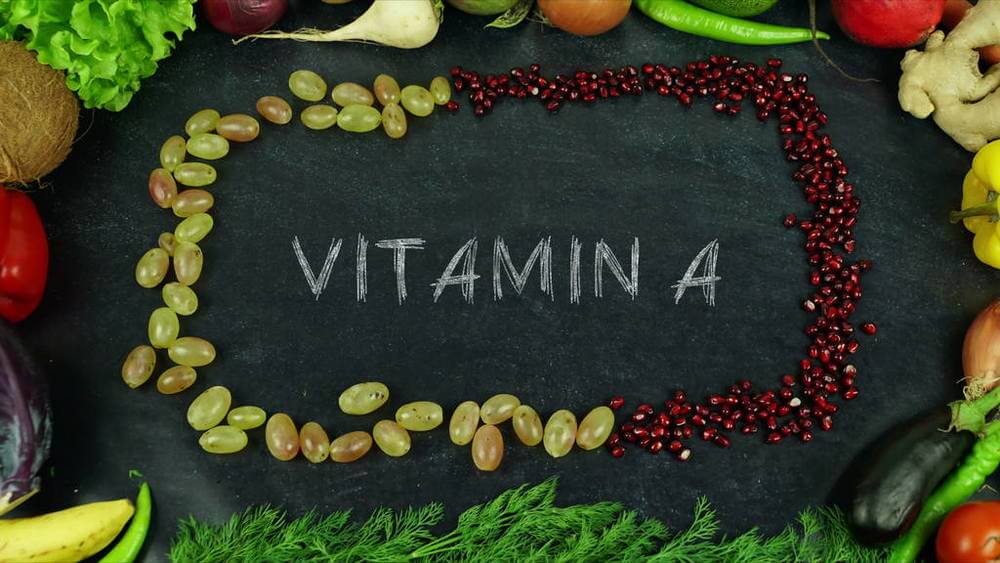Which Fruit Highest in Vitamin A? Top 15 Fruits High in Vitamin A

Vitamin A is a fat-soluble vitamin and an essential nutrient for humans. It has many important functions in the body, such as embryo development and growth, maintenance of good vision, immune system function, and keeping skin healthy.
Vitamin A is found in foods as preformed vitamin A and as provitamin A carotenoids. The most well-known function of vitamin A is its role in vision. Vitamin A is also needed to maintain the health of many types of cells, support the immune system, and promote proper growth and development. Vitamin A and some carotenoids may be important in preventing cancer. However, because taking supplements of preformed vitamin A can be toxic, especially in pregnancy, the best recommendation is to focus primarily on eating plenty of provitamin A-rich foods, such as fruits and vegetables.
Many of the fruits high in vitamin A are yellow or orange in color because they contain β-carotene, the orange pigment responsible for the bold colors of fruits and vegetables. Vitamin A and its plant-derived precursor( β-carotene) have profound effects on our health. Carrots, sweet potatoes, pumpkins, cantaloupe, and apricots are rich sources of vitamin A. In addition, some dark green vegetables that are also high in vitamin A, such as spinach, kale, mustard greens, and broccoli, owe their color to both chlorophyll and beta-carotene.
The current daily value (DV) for vitamin A is 900μg of retinol activity equivalents (RAEs). Here is a list of fruits rich in vitamin A, sortable by 100 gram serving size.
1. Cantaloupe
| Serving | Vitamin A (RAE) | % DV |
| 100g | 232 μg | 26% |
| 1 cup (160 g) | 371 μg | 41% |
Nutrition Facts and Health Benefits for Cantaloupe
2. Dried Apricots
| Serving | Vitamin A (RAE) | % DV |
| 100g | 180 μg | 20% |
| 1 cup (130 g) | 234 μg | 26% |
3. Dried Peaches
| Serving | Vitamin A (RAE) | % DV |
| 100g | 108 μg | 12% |
| 1 cup (160 g) | 173 μg | 19% |
Nutrition Facts and Health Benefits for Peaches
4. Apricots
| Serving | Vitamin A (RAE) | % DV |
| 100g | 96 μg | 254% |
| 1 cup (155 g) | 149 μg |
Nutrition Facts and Health Benefits for Apricots
5. Melon balls
| Serving | Vitamin A (RAE) | % DV |
| 100g | 89 μg | 11% |
| 1 cup (173 g) | 154 μg | 17% |
6. Prunes
| Serving | Vitamin A (RAE) | % DV |
| 100g | 88 μg | 10% |
| 1 cup (132 g) | 116 μg | 13% |
Nutrition Facts and Health Benefits for Prunes
7. Japanese Persimmon
| Serving | Vitamin A (RAE) | % DV |
| 100g | 81 μg | 9% |
| 1 fruit (168 g) | 136 μg | 15% |
Nutrition Facts and Health Benefits for Persimmon
8. Loquats
| Serving | Vitamin A (RAE) | % DV |
| 100g | 76 μg | 254% |
| 1 cup (149 g) | 113 μg |
Nutrition Facts and Health Benefits for Loquats
9. Pitanga (Surinam-cherry)
| Serving | Vitamin A (RAE) | % DV |
| 100g | 75 μg | 8% |
| 1 cup (173 g) | 130 μg | 14% |
10. Dried Mango
| Serving | Vitamin A (RAE) | % DV |
| 100g | 67 μg | 254% |
Nutrition Facts and Health Benefits for Mango
11. Passion Fruit
| Serving | Vitamin A (RAE) | % DV |
| 100g | 64 μg | 7% |
| 1 cup (236 g) | 151 μg |
Nutrition Facts and Health Benefits for Passion Fruit
12. Yellow Plantains
| Serving | Vitamin A (RAE) | % DV |
| 100g | 56 μg | 6% |
| 1 cup (148 g) | 82.9 μg | 9% |
13. Papayas
| Serving | Vitamin A (RAE) | % DV |
| 100g | 47 μg | 5% |
| 1 fruit (157 g) | 73.8 μg | 8% |
Nutrition Facts and Health Benefits for Papayas
14. Acerola (West Indian Cherry)
| Serving | Vitamin A (RAE) | % DV |
| 100g | 38 μg | 4% |
| 1 cup (98 g) | 37.2 μg | 4% |
Nutrition Facts and Health Benefits for Acerola
15. Tangerines (Mandarin Oranges)
| Serving | Vitamin A (RAE) | % DV |
| 100g | 34 μg | 4% |
| 1 cup (195 g) | 66.3 μg | 7% |